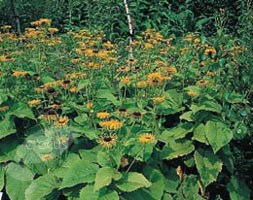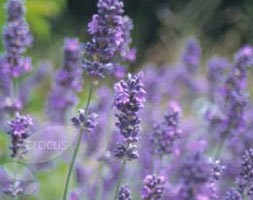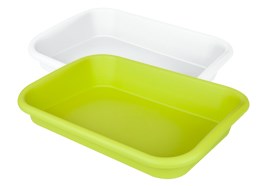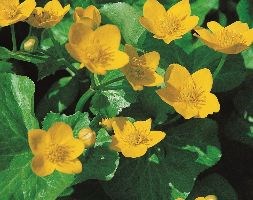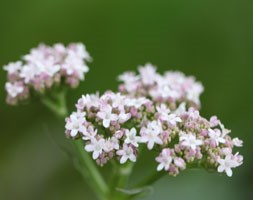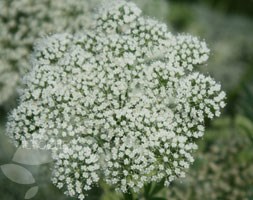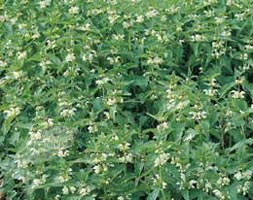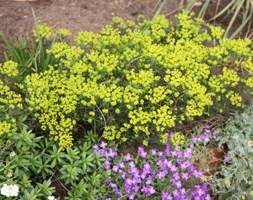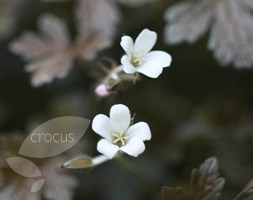New products at Crocus
by Sarah - June 12th, 2015.Filed under: Crocus, New Products.
Crocus just added these new lines
Telekia speciosa (Large Yellow Ox-eye) £19.99
Daisy-like yellow flowers
Lavandula angustifolia (lavender) £19.99
Position: full sun Soil: moderately fertile, well-drained soil Rate of growth: average Flowering period: July to September Hardiness: fully hardy Dense spikes of fragrant, pale to deep purple summer flowers appear in summer above slender, steely, grey-green foliage. This lovely, large lavender makes a gorgeous, flowering informal hedge, especially along a path, where its fragrance can be appreciated. A stalwart of traditional English gardens, it also looks good in a gravel garden, or clipped into a formal sphere for a contemporary look. The flower-spikes are highly attractive to bees and other beneficial insects. Garden care: Cut back the stalks after the flowers have faded. Carefully trim back in April, taking care not to cut into old wood.
Propagation garden grow tray £9.99
This garden grow tray is a multifunctional tool for the garden. Use as a grow tray for seedlings, to contain compost for easy potting, or as a mini work bench when working in the garden. Measurements: Length 59cm Width 41cm Height 11cm
Caltha palustris (marsh marigold) £9.99
Position: full sun or partial shade Depth of water: 0-23cm (0-9in) Rate of growth: average to fast Flowering period: April Flower colour: yellow Hardiness: fully hardy The kidney-shaped dark green leaves of this lovely marsh marigold are excellent for softening the edges of a pond. One of the first marginal plants into bloom, it produces a mass of waxy, yellow buttercup-like flowers in April. It is ideally suited to boggy conditions, and will even cope in water up to 23cm deep for short periods of time. Garden care: Lift and divide large clumps in late spring.
Valeriana officinalis (valerian) £9.99
Position: full sun or light shade Soil: moist but well drained soil Rate of growth: average Flowering period: June – August Flower colour: white or pale pink Other features: aromatic foliage Hardiness: fully hardy Tall branching stems, produce rounded or dome-shaped clusters of white to blush pink flowers from early summer above the mounds of aromatic, finely divided foliage. The flowers are very rich in nectar, and the leaves can be used in a number of herbal remedies. Its natural, billowing habit makes it ideally suited to wilder planting schemes. Garden care: Gather flower-heads for use in dried flower arrangements from mid to late-summer before the seedheads begin to ripen.
Cenolophium denudatum (Baltic parsley) £9.99
Position: full sun or partial shade Soil: moist but well-drained soil Rate of growth: fast-growing Flowering period: July to October Flower colour: creamy white Other features: excellent for dried flower arrangements Hardiness: fully hardy Big, blousy heads of elegant flowers are the star feature of this plant. They emerge above mounds of dark green fern-like, semi-evergreen foliage in mid summer and last well into autumn. These gorgeous flowers act as a beacon to beneficial insects and are great in cut or dried flower arrangements. Very popular with all the top designers now, this relatively new introduction to the UK is bang on trend. Garden Care: Apply a generous mulch around the base of the plant in autumn and snip off the flowerheads before they set seed if you dont want more plants in spring.
Lamium maculatum ‘Album’ (spotted dead nettle) £8.99
Position: full sun or partial shade Soil: moist, well-drained garden soil Rate of growth: average to fast Hardiness: fully hardy Whorls of white, nettle-like flowers appear from April to July above a low, spreading carpet of matt-green leaves with silvery edges. This long-flowering dead nettle makes pretty, semi-evergreen groundcover around the base of deciduous shrubs and trees. It prefers partial shade, and once established, will even flourish in dry shade. Garden care: If you are growing this in dry shade, keep it well watered until it is established. After it has finished flowering, remove the faded flower heads to encourage fresh new foliage. Lift and divide large clump s in late autumn or early spring.
Euphorbia cyparissias ‘Fens Ruby’ (cypress spurge) £7.99
Position: full sun Soil: light, well-drained garden soil Rate of growth: vigorous Flowering period: May to July Hardiness: fully hardy Upright stems are strung with whorls of purple-flushed, lance-shaped leaves, which produce the best colour in a sunny spot. In early summer, rounded clusters of citrus-yellow flowerheads appear above the foliage. This is a gorgeous, deciduous, spreading perennial that looks great planted towards the front of a sunny border or as part of a Mediterranean scheme. It also makes excellent ground cover. It can run amok if left unattended though so make sure to deadhead before it sets seed and that unwanted seedlings are removed promptly. Garden care: When working with spurges always wear gloves since the milky sap is poisonous and a potential skin irritant.
Geranium ‘Sanne’ (cranesbill) £7.99
Position: full sun or partial shade Soil: fertile, well-drained soil Rate of growth: fast-growing Flowering period: May to September Hardiness: fully hardy Dense and spreading, the reddish brown-flushed foliage forms neat, cushion-like mounds, which are topped for a long period from early summer, with simple white flowers. The combination of colour and form is quite a fetching one, and this makes it a very attractive (and weed-smothering) groundcover for the front of the border. It also works well in a pot and can be underplanted with spring flowering bulbs, which will extend the season of interest. Garden care: In midsummer rejuvenate plants that are beginning to look jaded, by removing old flowered stems and leaves. Lift and divide large colonies in spring.







